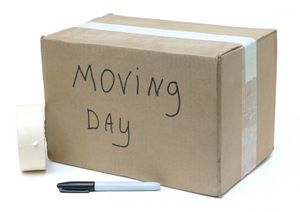Moving In
 Another potential cost to be aware of, once you’ve identified a suitable self-storage space, is whether or not you need a van to move into it. The cheapest option, if possible, is simply to load up a car or two and do the job yourself. If that can’t be done, then the storage company will usually be willing to help equip you with a van for the day.
Another potential cost to be aware of, once you’ve identified a suitable self-storage space, is whether or not you need a van to move into it. The cheapest option, if possible, is simply to load up a car or two and do the job yourself. If that can’t be done, then the storage company will usually be willing to help equip you with a van for the day.
Storage companies do not all do this the same way. Some of the larger ones will actually provide free transport (within certain conditions; check these carefully), either by owning their own fleet of vans that you can access, or by putting you in touch with a local van hire company and then refunding what you’ve paid them. Some offer their own vans at specially discounted prices. Others will simply recommend local firms, and leave you to organise and fund the transport yourself.
 The logistics of moving in after that depend largely on what type of facility you are using. Broadly speaking, a modern warehouse-type of storage centre will have a loading bay at the back and/or a large car park, from where you are expected to manoeuvre what you intend to store using trolleys and pallet trucks. Containerised facilities, on the other hand, usually have a more diffuse layout where everything is on the ground level, meaning you can often reverse a van next to your unit and just move things in from there. In either case, it’s a good idea to check in at reception beforehand so that they understand what you’re doing, and whoever’s behind the desk should be able to advise you then on what to do.
The logistics of moving in after that depend largely on what type of facility you are using. Broadly speaking, a modern warehouse-type of storage centre will have a loading bay at the back and/or a large car park, from where you are expected to manoeuvre what you intend to store using trolleys and pallet trucks. Containerised facilities, on the other hand, usually have a more diffuse layout where everything is on the ground level, meaning you can often reverse a van next to your unit and just move things in from there. In either case, it’s a good idea to check in at reception beforehand so that they understand what you’re doing, and whoever’s behind the desk should be able to advise you then on what to do.
Arranging your self storage unit
Once you’re ready to put your belongings into the unit there are some factors that need to be kept in mind about the most efficient way of organising them. These include:
- Leaving a gangway from the entrance to near the back of your unit so you can access everything that’s piled up against the surrounding sides without having to move things.
- Working out what you’re most likely to need access to whilst its stored, and placing these items near the front.
- Putting larger objects (such as furniture) near the back, so they don’t block access to smaller ones.
-
Placing boxes on top of each other piled from largest to smallest.

- Taking advantage of any architectural shelves that are created in your unit by low inner-walls or metal fittings, and possibly buying some flat-pack shelving if you have small objects like books, DVDs and ornaments that you’d prefer to keep out of boxes (very simple shelving, of the type shown on the right, starts from IKEA at about £7)
- Packing things high: most providers have a uniform height for all their different floor areas of room, meaning you pay for space that’s horizontal rather than vertical. Therefore it doesn’t cost you anything to stack as high as you can go in the room, saving you money on the size of floor area you need
